Features of pandanus care, reproduction, possible problems
Not many people grow pandanus at home. Caring for this plant is not difficult, but there are certain difficulties associated with the thorny leaves and the large size of the plant. Problems can be avoided by growing small species without thorns.
The Pandanov family has about 700 species with variegated and green leaves. In indoor and greenhouse culture, Pandanus utilis (Pandanus useful) is usually grown with tough dark green leaves covered with reddish thorns at the edges and center. In the room, it grows to a three-meter mark.
Less popular:
- pandanus Sandera - undersized pandanus with longitudinal yellow stripes on the leaves;
- pandanus Veicha is a spreading bush a little more than a meter high with serrated leaf edges;
- dwarf and sedge pandanus - grown outdoors.
It is very rare in the collections of amateur florists to find Pandanus baptista - a small plant with even, not jagged leaves
Care features
Pandanus, or spiral palm, is one of those rare houseplants that are easy to care for. The only problem with growing this flower is its size. Pandanus grows rapidly and after 3-4 years a powerful specimen with long thorny leaves grows from a pretty small sprout, which does not fit on a windowsill.
Pandanus is ideal for landscaping halls, lobbies of public institutions, greenhouses, winter gardens, where it will look great and will not disturb anyone.
Young plants do not like direct sunlight and do not tolerate a lack of light. Like most indoor flowers, windows facing west or east are suitable for pandanus. In bright but diffused lighting, its leaves will have an attractive bright color. In northern latitudes and in the middle lane in winter, the plant has to be illuminated for several hours a day.
Advice
The pot should be rotated 45 degrees once a week. This will help the plant develop on all sides, evenly overgrowing with leaves. It is not worth taking out pandanus to the balcony in summer, as it will begin to grow much faster outdoors.
Despite the thorns on the leaves, they will have to be regularly looked after, wiping off dust. It is easier to do this with a damp cloth or sponge, wearing thin cloth gloves to avoid scratching your hands. A small plant can be watered once a week with warm water from the shower, washing away the dust.
Pandanus has naturally dark, shiny leaves. They do not need to be sprayed with vegetable polish. But it is still better to spray the flower from time to time for shine, since these products contain an antistatic agent, thanks to which dust does not accumulate on the leaves for much longer. Treated leaves have to be wiped less often, which is important, given their thorniness and density. Only adult and old leaves are sprayed, trying not to get on the trunk and the lower surface of the plates. Instead of purchased polish, beer is sometimes used mixed with water in a 1: 1 ratio.
Watering, feeding
In the wild, pandanus grows in the humid tropics, so it loves moisture in the apartment. In the summer, the flower is watered abundantly, as the long leaves of the pandanus evaporate a lot of water, and the earth dries up quickly. When the air temperature drops, the leaves reduce evaporation, and if the watering is still intense, the roots can rot. To prevent this from happening, in winter the plant is watered only after the top layer of the soil has dried.
For irrigation, use settled tap water.Occasionally, the top watering is replaced with the bottom one, pouring water into the pan. In this case, the plant takes just as much water as needed. It is not recommended to regularly use bottom watering, as the pandanus will begin to grow roots quickly and will need a transplant.
Top dressing is needed only during the period of active growth - in spring and summer. Use a complex mineral or organic fertilizer for indoor flowers or special food for palm trees (Agricola for palm trees, Kristalon, etc.). Top dressing is carried out every 2-3 weeks.
Pandanus can be safely left at home, leaving for several weeks. The plant will perfectly tolerate the lack of watering and other care. The young specimen is removed from the windowsill so that it does not dry out in the sun. Large plants in tubs on the floor are left in the same place. Before leaving, houseplants are well watered. If you are planning a long trip, you will have to ask neighbors or relatives to visit the apartment every two weeks and water the spiral palm tree.
Pruning pandanus
The plant does not need to be shaped. From time to time you have to cut off the dried tips of the leaves. When trimming dry ends, it is important not to touch the living tissue, leaving 1-2 millimeters between it and the cut. With age, the pandanus has aerial roots - they should never be cut off.
Children grow on the trunk, which can be separated and rooted. Reproduction is easiest in the spring. Children with small roots are separated from the trunk by hands, dried for several hours, and then planted in a mixture of sand and peat. The substrate must be kept constantly moist. At temperatures above 20 degrees, babies take root easily.
Transfer
The flower is transplanted once a year. It grows quite quickly, already a three-year-old bush has aerial roots, after which the growth becomes even more intense. More often than once a year, replanting pandanus is not worth it, even if it seems that the plant needs a more spacious pot for a long time. The more often the pandanus is transplanted, the faster it grows, which means that you will have to part with it faster, giving it to a kindergarten, school, library or other institution where there is enough space for it. Adult spiral palms are replanted every 3 years using the transhipment method. The new container should be 5 centimeters wider and deeper than the old one.
The palm tree grows large, and it will take a lot of land for replanting. The unpretentiousness of pandanus helps the grower to significantly save on purchased soils. The flower grows well in light soil with low acidity. This is the most popular type of potting soil you can buy at any garden supply store. Any universal primer is suitable for pandanus. Particular attention should be paid to soil mixture for palm trees, but even the most inexpensive land will do.
A plant that, due to its size, has already been moved to the floor and is kept in a large container, is not transplanted, but only the topsoil is changed twice a year. The replacement soil is made independently, since the adult pandanus prefers a denser soil than the peaty purchased soil. To prepare the substrate, garden soil is mixed with peat in a 2: 1 ratio.
Stunted pandanuses
In landscape design, they use low types of pandanus, up to 60 cm high, - dwarf and sedge. For the winter, they are transplanted from a flower bed into a pot and transferred to a warm room. Dwarf is suitable for permanent maintenance in the house. Its leaves are narrower than those of other species, which is why it is more similar to dracaena than other pandanus. He needs home care the same as other types.
Why do the leaves turn yellow?
Pandanus is a very hardy plant. It is practically not damaged by diseases and pests. In exceptional cases, shields and false shields may appear on it, which they get rid of with the help of Actellik. Treatments are repeated at intervals of 3 days, 2-4 sprays are enough.Single pests are removed from the leaf with a cotton swab dipped in vodka.
Too dry air can cause leaf tips to dry out and turn brown. Despite its tropical origin, the palm tree does not need high air humidity, but in winter, when the central heating is on, it will be grateful for daily spraying - this will help keep the tips of the leaves from drying out.
Leaves turn yellow due to lack of nutrition. Like any fast growing plant, the pandanus needs high doses of fertilizer. Regular dressing in spring and summer and keeping the soil moderately moist will keep the leaves green and healthy all year round.
Variegated varieties lose brightness, and new leaves grow small? This is due to a lack of light. In winter, it is better to rearrange the plant to the south window. Due to the excess of light, the leaves become whitish. Leaves can also turn white due to watering with hard water with a high calcium content.
Pandanus can be safely called the king of the winter garden. This is a great tapeworm. In the open space, the plant transforms and looks luxurious and majestic. The spiral palm never curves towards sunlight, even if the lighting is insufficient. It will always be slender and straight, only the foliage on the sunny side will be thicker. The plant is kept in the room until about ten years of age, and then it is better to find more suitable conditions for it.
So, caring for pandanus is not difficult. Plants are unpretentious, hardy, survive in darkened halls and lobbies, away from windows, in walking drafts. Pandanus should be started if you need a fast-growing, unpretentious indoor flower that looks like a dragon, a yucca or a palm tree.

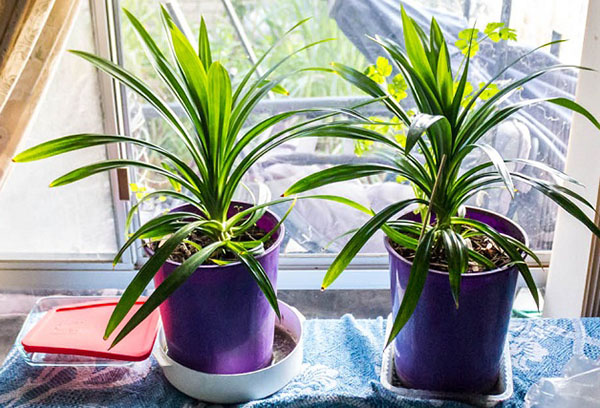
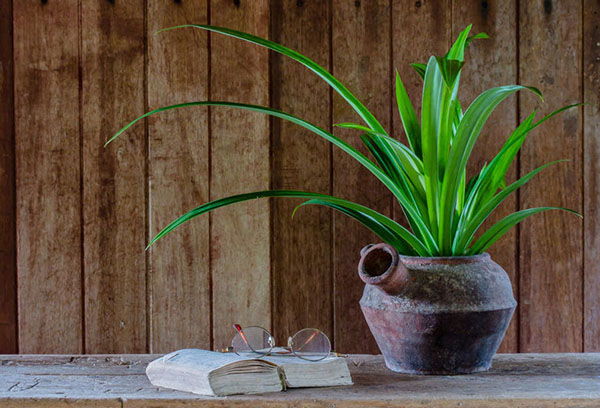
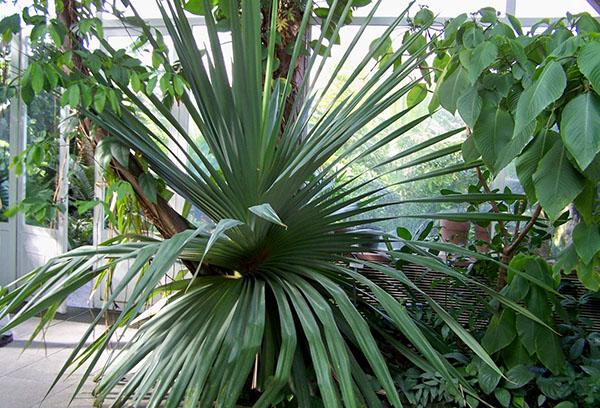
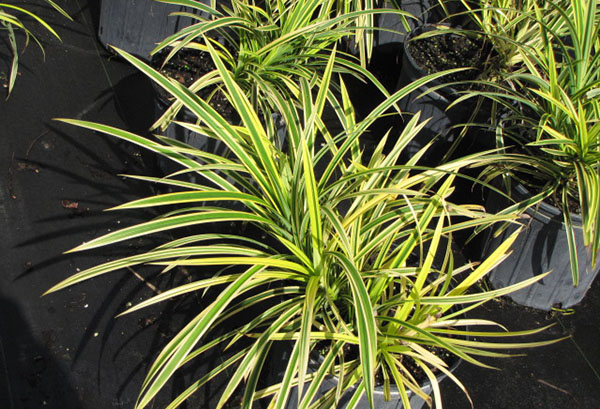
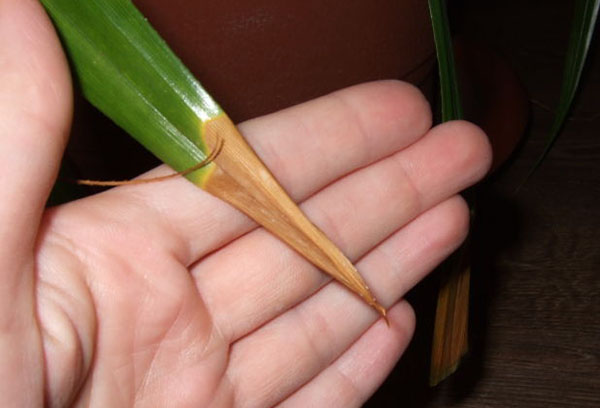
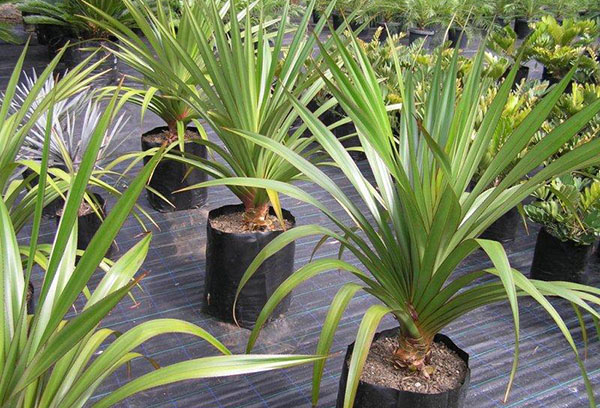
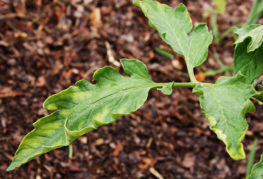

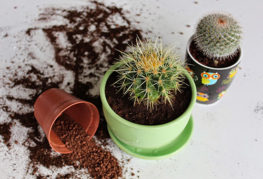
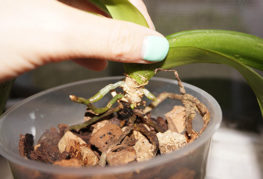
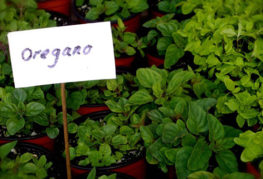
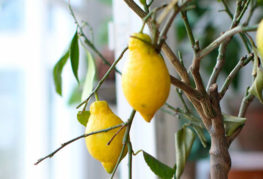
Actellic is prohibited !!!